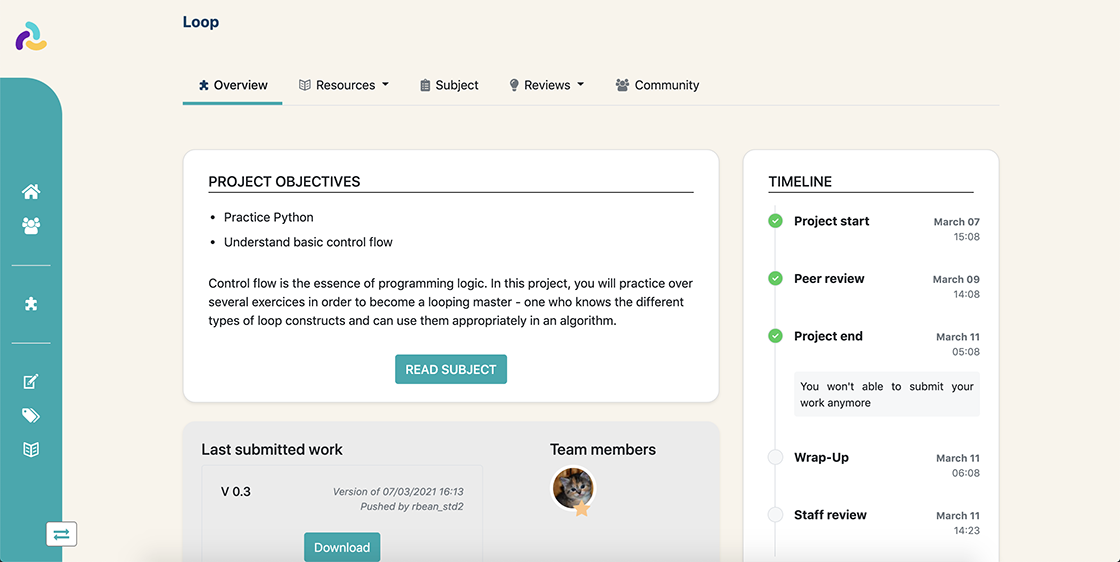- Instructional Design
- Student Agency
- Class Management
- UX
- Coding Package optional
Focus on what students do
On Rbean, a course is broken into modules, which are broken into projects. Projects are the building blocks of the learning experience. They can be series of exercises, heavily scaffolded projects or open-ended questions. It’s flexible!
Each project is its own little ecosystem, with resources that students can “pull”, quizzes to self-assess, reviews to get feedback, flashcards for long-term memory gains, and a community space to co-construct knowledge. You can also add hidden resources just for TAs.

👉Want to learn more about all the possibilities our LMS offers? Come and chat with us!